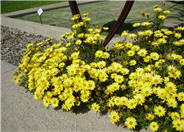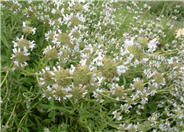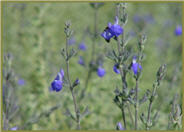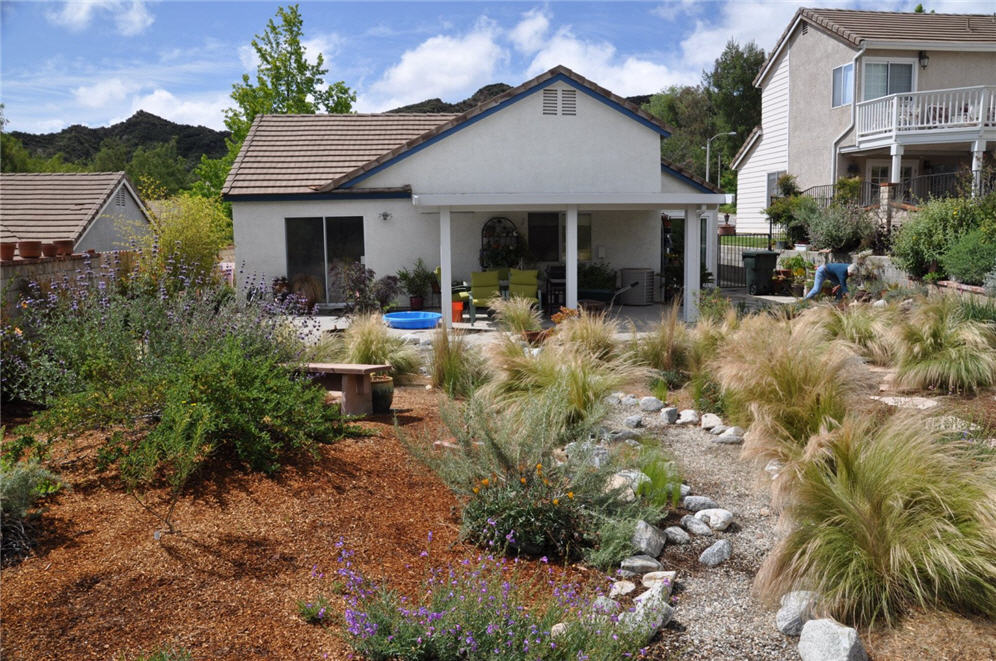
Common name:Mexican Feather Grass
Botanical name:Nassella tenuissima
This ornamental grass grows to 2' tall. It goes partially dormant during the summer but green in spring and fall. It prefers a sunny, well drained site. This plant can be invasive in some areas, so use caution. To keep reseeding to a minimum, drip irrigation will be best. Cut back in early spring to remove dormant foliage and dried seed heads. It can also tolerate dry shade. It grows to 10" wide and is the finest textured of the ornamental grasses.

Common name:Arctotis Daisy, African Daisy
Botanical name:Arctotis hybrids
African Daisy hybrids grow 12"-18" high and 12" wide; they produce daisy-like flowers from spring through summer. These hybrids have lobed leaves and bloom in white, pink, red, purple, cream and orange.

Common name:Aromas Sage
Botanical name:Salvia 'Aromas'
The Aromas Sage is a selection that stays more compact than the Cleveland Sage and grows to about 3'-5' high and wide. It has distinctively fragrant, gray green foliage and whorls of violet blue flowers in spring and summer. It can withstand strong winds and is deer resistant. It prefers full sun and well draining soil.

Common name:Black or Honey Sage
Botanical name:Salvia mellifera
This woody shrub has fragrant, dark green leaves with blue, white, or lilac flowers that bloom in the spring and summer.

Common name:Germander Sage
Botanical name:Salvia chamaedryoides
Low mounding perennial with long bloom spreads by underground runners. Produces a small, silvery foliage which serves as a background for bright blue flowers. Bruised leaves have spicy fragrance. Native to eastern Mexico 7-9000' in desert habitat Grows to mature size of 2' tall and wide. Heaviest bloom in spring and early fall, intermittent throughout the rest of the season. Full sun, well drained site. No fertilizer. Drought tolerant.
| Designer: Gwen Romani | Grassland |
Photographer: GardenSoft |
Soils and Compost:
Practice grass-cycling by leaving short grass clippings on lawns after mowing, so that nutrients and organic matter are returned to the soil.
Water Saving Tip:
Apply as little fertilizer as possible.
If you use fertilizer make sure it stays on the landscape, and carefully water it in so there is NO runoff.
Integrated Pest Management:
Drip and other smart irrigation delivers water directly to roots, allowing no excess water for weeds.
